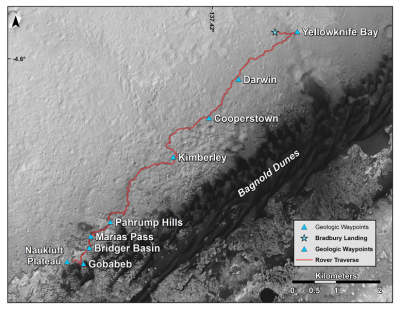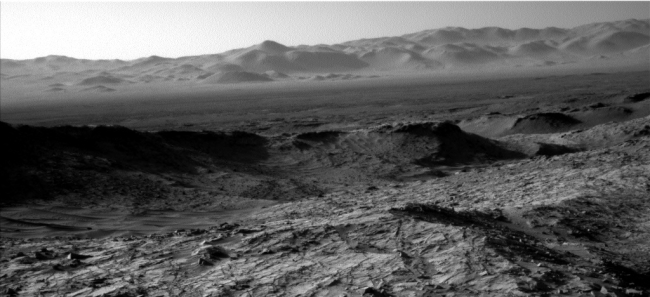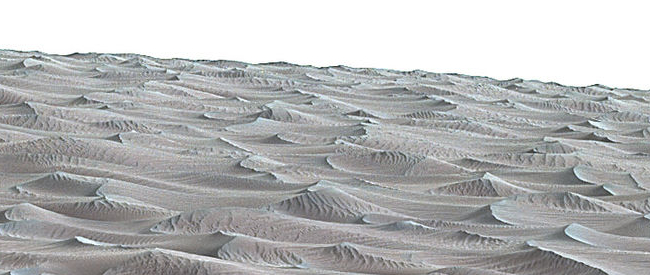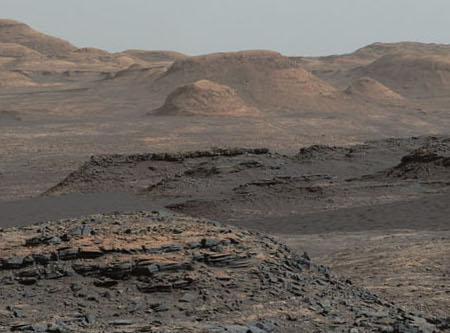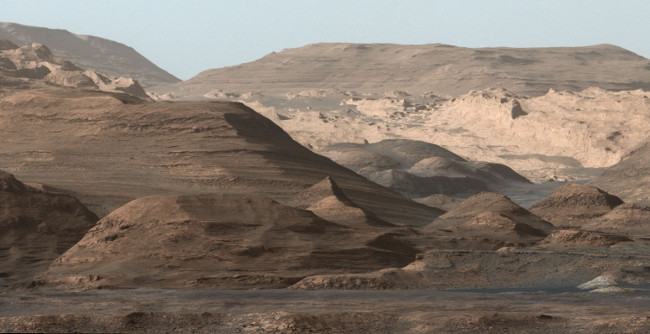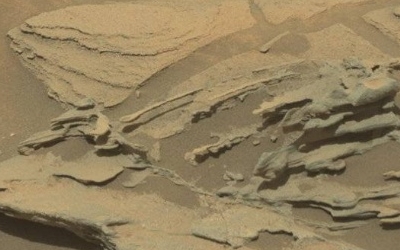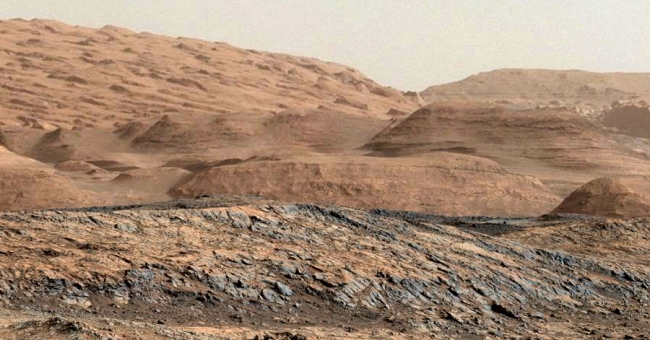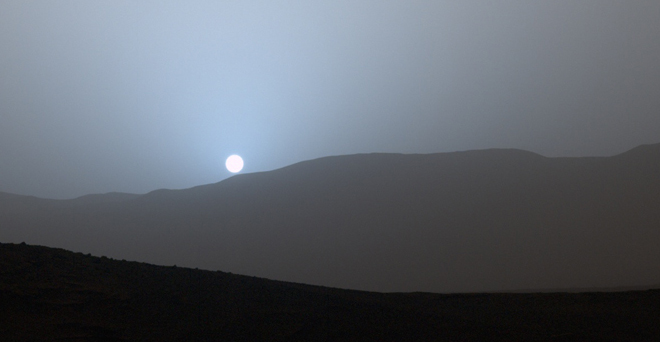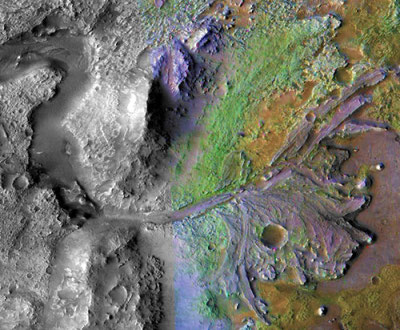
For the next Mars rover, scheduled to launch in 2020, scientists have now narrowed their candidate landing sites to eight, with Jezero Crater (pictured on the right) the favorite choice.
The top vote getter was Jezero crater, which contains a relic river delta that could have concentrated and preserved organic molecules. “The appeal is twofold,” says Bethany Ehlmann, a planetary scientist at the California Institute of Technology (Caltech) in Pasadena. “Not only is there a delta, but the rocks upstream are varied and diverse.”
The image clearly shows the scientific attraction of Jezero Crater, with an obvious meandering river canyon opening out into an obvious river delta. The crater in the delta will also give them an opportunity to do some dating research, since that crater had to have been put there after the delta was formed.
The choice however illustrates the difference in goals between scientists and future colonists. Scientists are looking for the most interesting locations for understanding the geological history of Mars. Future colonists want to find the best places to establish a home. Jezero Crater, as well as the other eight candidate sites, do not necessarily fit that settlement need. For a colonist it might be better to put a rover down on the flanks of Arsia Mons, one of Mars’ giant craters where scientists have evidence of both water-ice and caves. None of the candidate sites, however, are aimed anywhere close to this volcanic region, because scientifically it is not as interesting.
This is not to say that the candidate sites might not be good settlement sites. It is only to note that the focus of these scientists is research only. Furthermore, it is probably premature anyway to look for settlement sites. We need to know more about Mars itself.
